Key Card Access Systems
Commercial key fob door entry systems or key card access systems are a form of security system that allows users to access doors with a card instead of a traditional key. Key card systems control access permissions at different levels of the organization and keep track of customers, employees, contractors, and other personnel accessing certain areas of your facility.
What is a key card?
A key card is a flat rectangular plastic card, similar to a credit card, that acts as a credential and stores digital patterns recognized by the door reader when a user holds it near a reader. There are various types of keycards, including the mechanical holecard, barcode, magnetic stripe, Wiegand cards, a smart card that has a microchip attached to it, and RFID proximity cards.
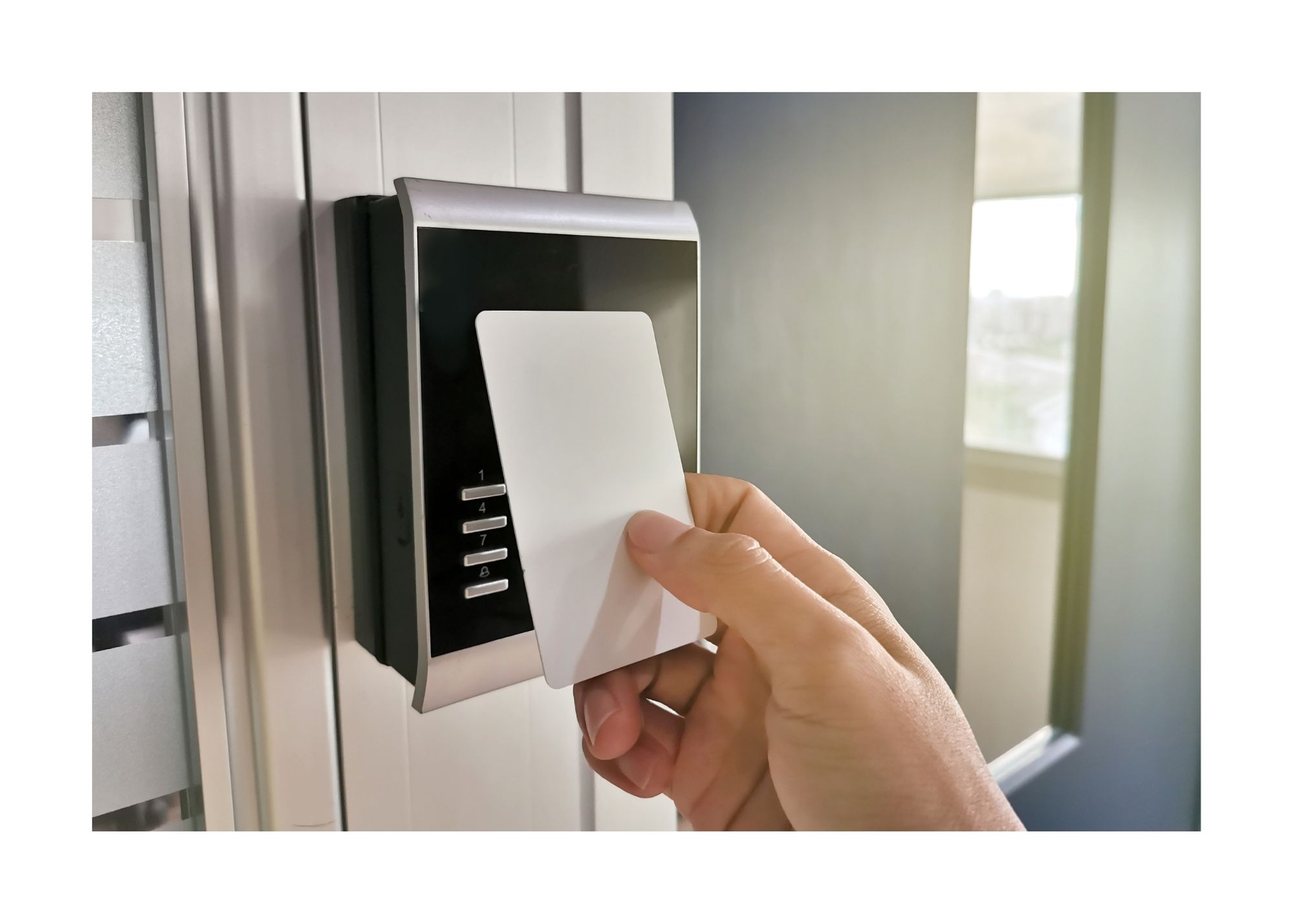
How does a card access system work?
A company’s needs may vary. Depending upon their requirements, the card can either have a metallic craving or work with RFID technology. In commercial key fob door entry systems, the card transmits a signal of a specific frequency to the card reader when the card is in close proximity to the reader. The signal from the reader then communicates with the rest of the system for an authentication process to grant access if a match is detected with the previously stored data – otherwise access to the facility is denied and the door remains locked. It’s also important to understand the commercial key fob door entry system cost to make informed decisions for your business.
Communication with card readers and door locks for entry
Depending on the system, the card may contain a coded magnetic stripe that needs to be swiped into the card reader or metallic engraving that triggers inside the reader, or even RFID technology. RFID cards function in a similar pattern except, in this case, the card is brought into proximity to a sensor. At this time, the reader creates an electromagnetic field that can transmit its number or code to the reader through an electronic circuit to the access control panel, which verifies if the number or code matches an approved number in the database. If the card is valid, access is granted, the door is unlocked for a short time, and the entry or exit is recorded. If access is denied, the door remains locked, and if someone attempts to access, it gets recorded. Commercial access control systems also monitor the door and set off an alarm if a door is forced open or held open for a long time after being unlocked. Each card is coded to respond to a particular card reader, a lock, or a set of locks, and a computer program an individual card with a unique electronic signature.
Permission Management for Key Card Access Systems
Keycards can be programmed to allow users in a specific location with time restrictions. They require manual setup on a local server. The admin enters unique user information in the system and sets permissions based on various factors like role, area of access, and various rules. Once the permission is set for the user, it is ready to be issued. If the permission is stored in the cloud, access can be updated by an Admin from anywhere and at any time. You can set site-based permissions for each authorized individual in the same system. This saves the cost involved in purchasing a new key card for each facility; mobile credentials work for all your locations in your facility and can be assessed from anywhere.
Understanding Card Access Control System Components
Card access control systems comprise several essential elements that work together to regulate entry:
-
Security Cards: These are typically embedded with chips that carry specific user information. When an individual uses the card, the system verifies their identity before granting access.
-
Card Readers: Installed at strategic entry points like doors and gates, these devices scan the card data. Once scanned, they communicate with the control system to either allow or deny access based on the credentials read.
-
System Controller: Serving as the central hub, the controller processes data from the card readers. It cross-references the input with the user database, deciding which commands to issue, such as unlocking a door.
-
Electronic Door Locks: These are the mechanisms that enforce entry or exit. Upon receiving a valid signal, they unlock the door and lock it again automatically after use. Depending on the system, this process can be initiated either manually or automatically.
-
Multi-Factor Authentication (MFA): To enhance security, some systems require additional authentication steps like entering a PIN code alongside swiping a card, providing another layer of protection.
-
Access Management Software: Essential for system operation, this software manages user credentials and access rights. It also logs activity to monitor compliance and resolve any security breaches effectively.
Each component plays a crucial role in maintaining a secure and efficient access control environment, ensuring only authorized individuals gain entry.
Types of door entry key cards
There are different types of cardholder credentials– Holecards, Barcode, swipe card, Weigand card, prox card, key fob. They sound different but all of these options function in a similar pattern. They are simple in use, with some providing more security than others.
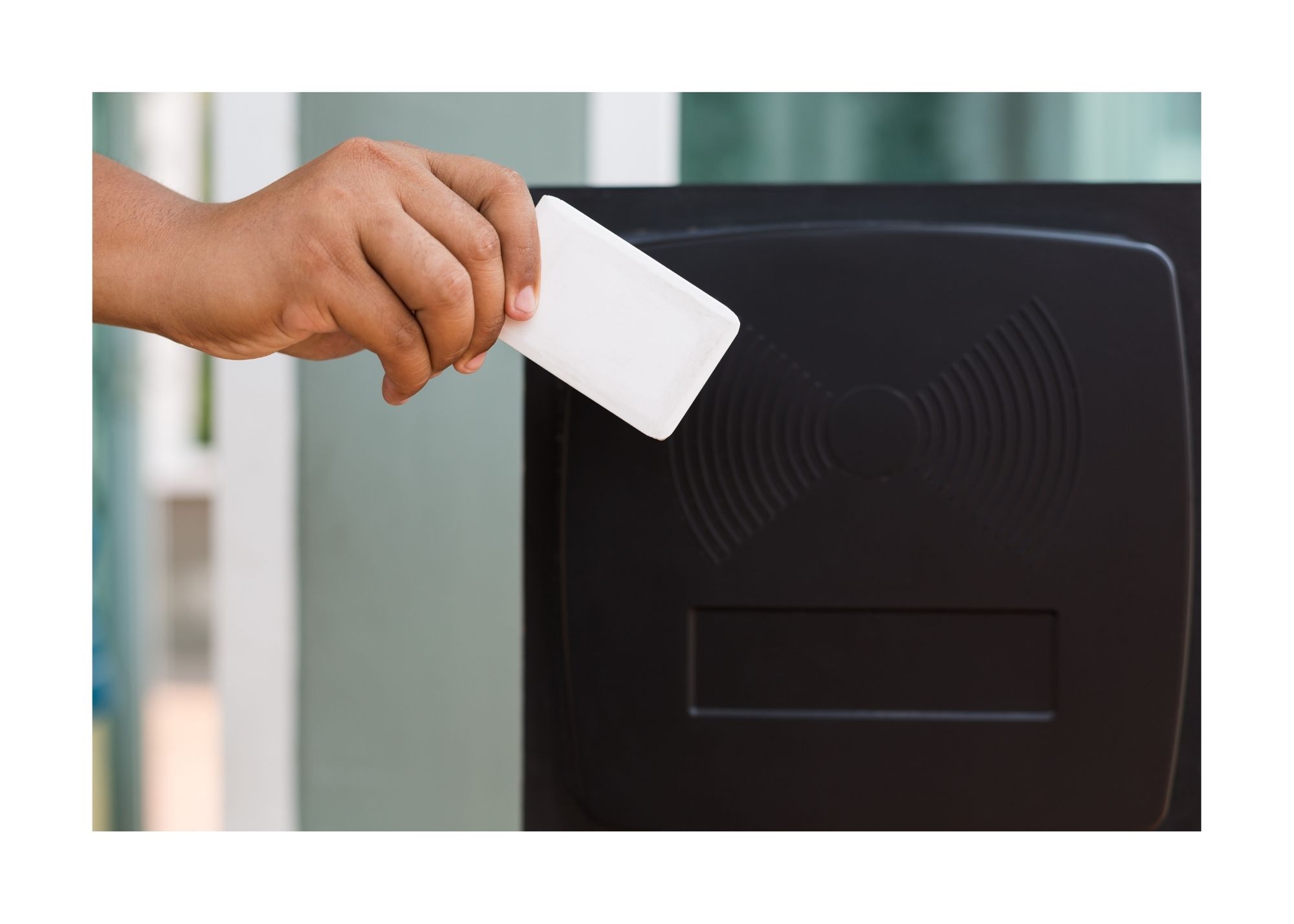
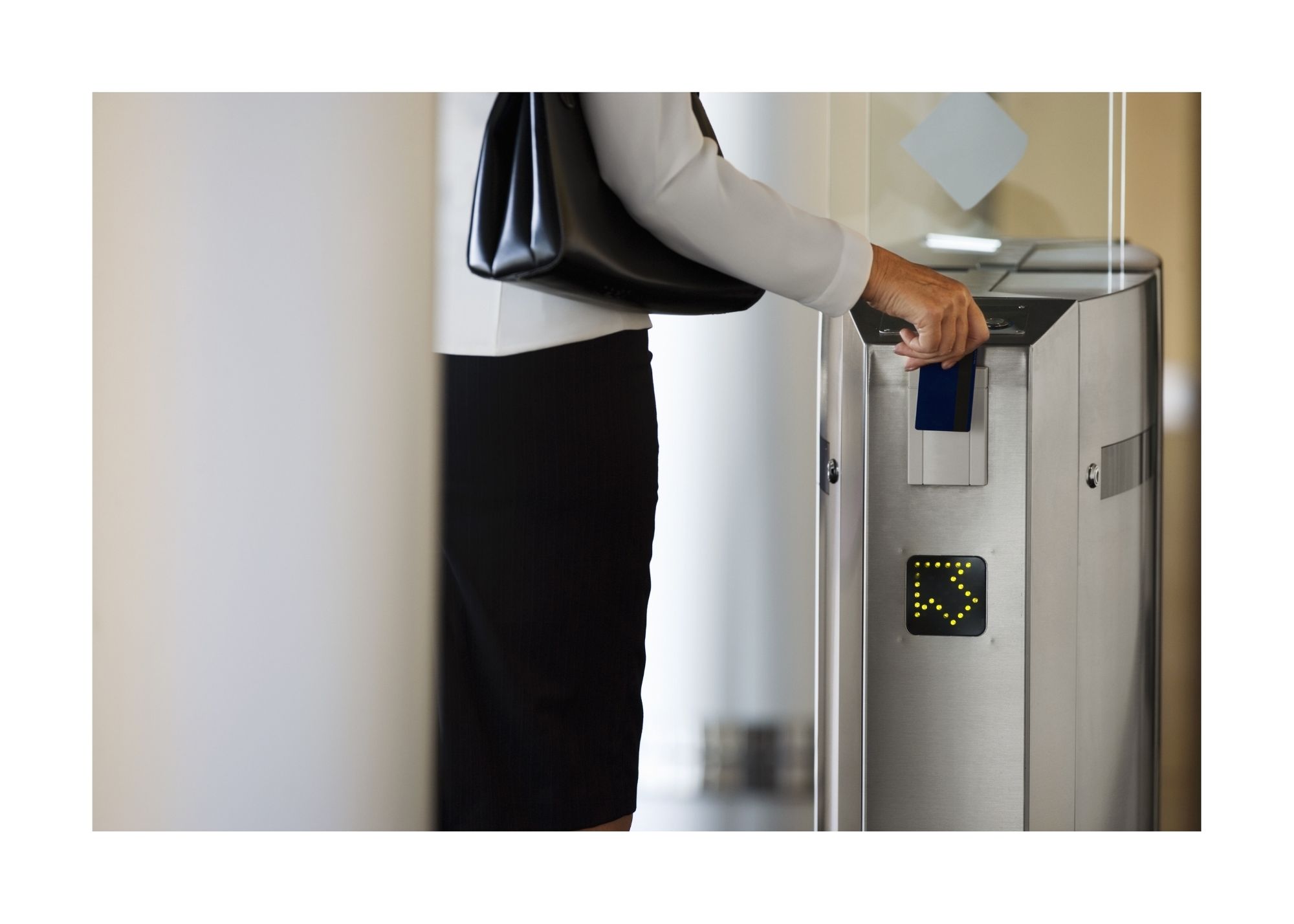
RFID Proximity Cards
It uses the newest technology. RFID cards have a microchip embedded inside the card that uses sensors. By bringing the card near the respective programmed reader, the door unlocks. It uses microchips and radio technology, providing the highest security level and is the most difficult to forge. The benefit of RFID cards is that they do not need to be removed from the wallet or held near the keycard reader, but can usually read them from a few inches away. They are most widely used in commercial office spaces.
Swipe Cards
Swipe cards are the ones the individual uses to swipe the card in the reader for gaining access to the facility. The most common types of swipe cards are – Magnetic strip cards, barcode cards, and Wiegand cards.
Magnetic Strip Cards
It’s a thin metallic strip on the back of the card, just like a credit card.
This card is swiped through a scanner, which functions by running the magnetic stripe over a sensor that reads the stripe’s contents. The stripe’s data is compared to the information that is either stored locally in the lock or in a central system. If the code is valid, by authenticating with an electronic signature on the card, then access is granted. Magnetic strip keycard systems are widely used in workplace security and hotels.
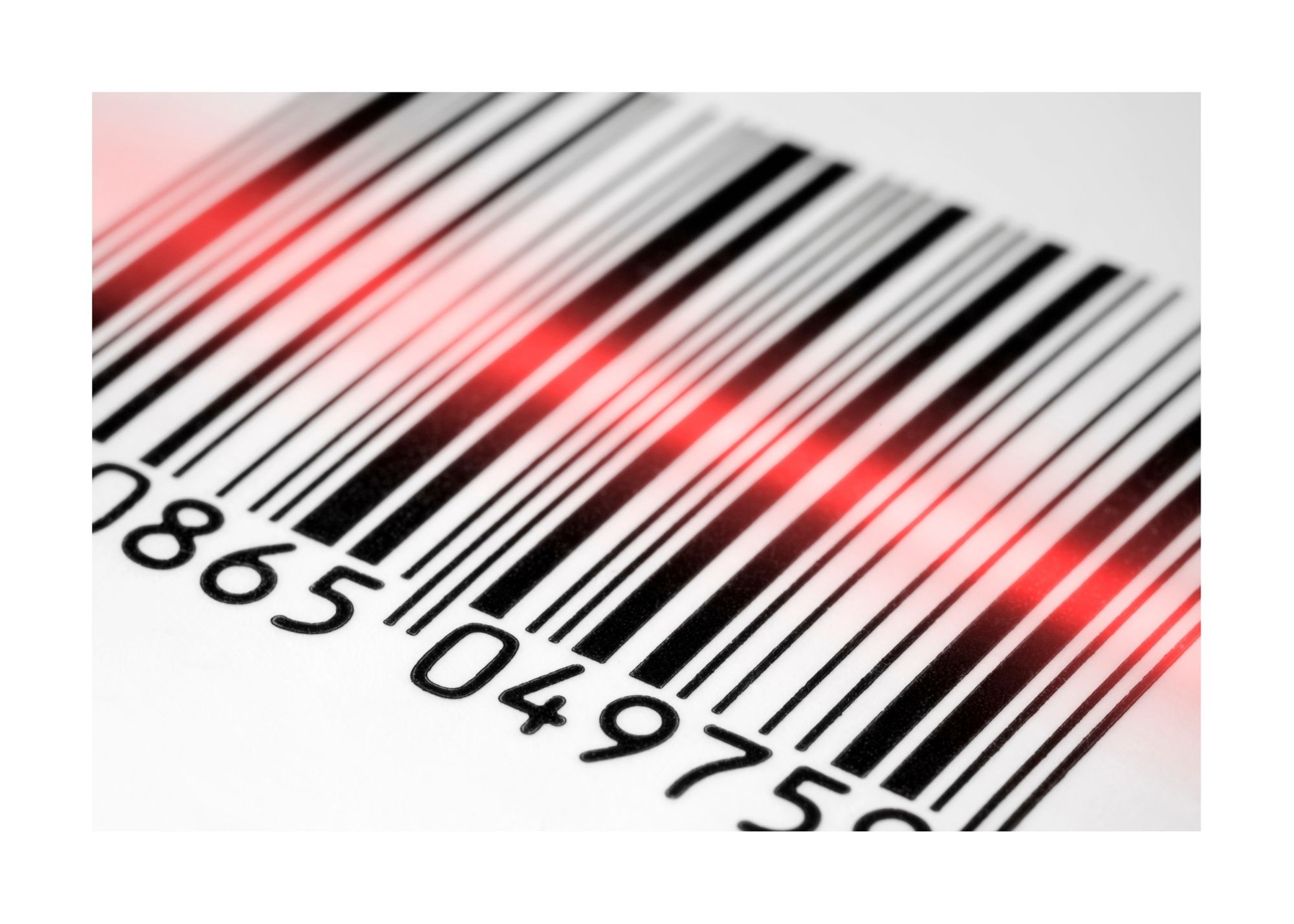
Barcode Cards
Barcode cards use innovative infrared technology. A unique individual bar code is created to match with a particular lock. The code is printed on a card, works similar to the bar code found on many products. When the bar code is placed under an electronic scanner, it is scanned by the reader. If the barcode matches an authorized pattern it unlocks the respective door. The drawback to this system was bar codes could be forged, and the electronic reader can be easily fooled. These cards are less popular options compared to magnetic strip keycards and RFID keycards.

Wiegand Cards
These systems set the keycode permanently in the card using magnetic wires. The code cannot be reprogrammed as magnetic strip cards or erased by the magnetic field. Many electronic access control locks use a Wiegand interface to connect the card swipe mechanism to the rest of the access control system.
Keyless Alternatives to Card Access Systems
There are many options available apart from the physical card that also functions with the same access control technology, such as key fobs, micro tags, and mobile credentials.
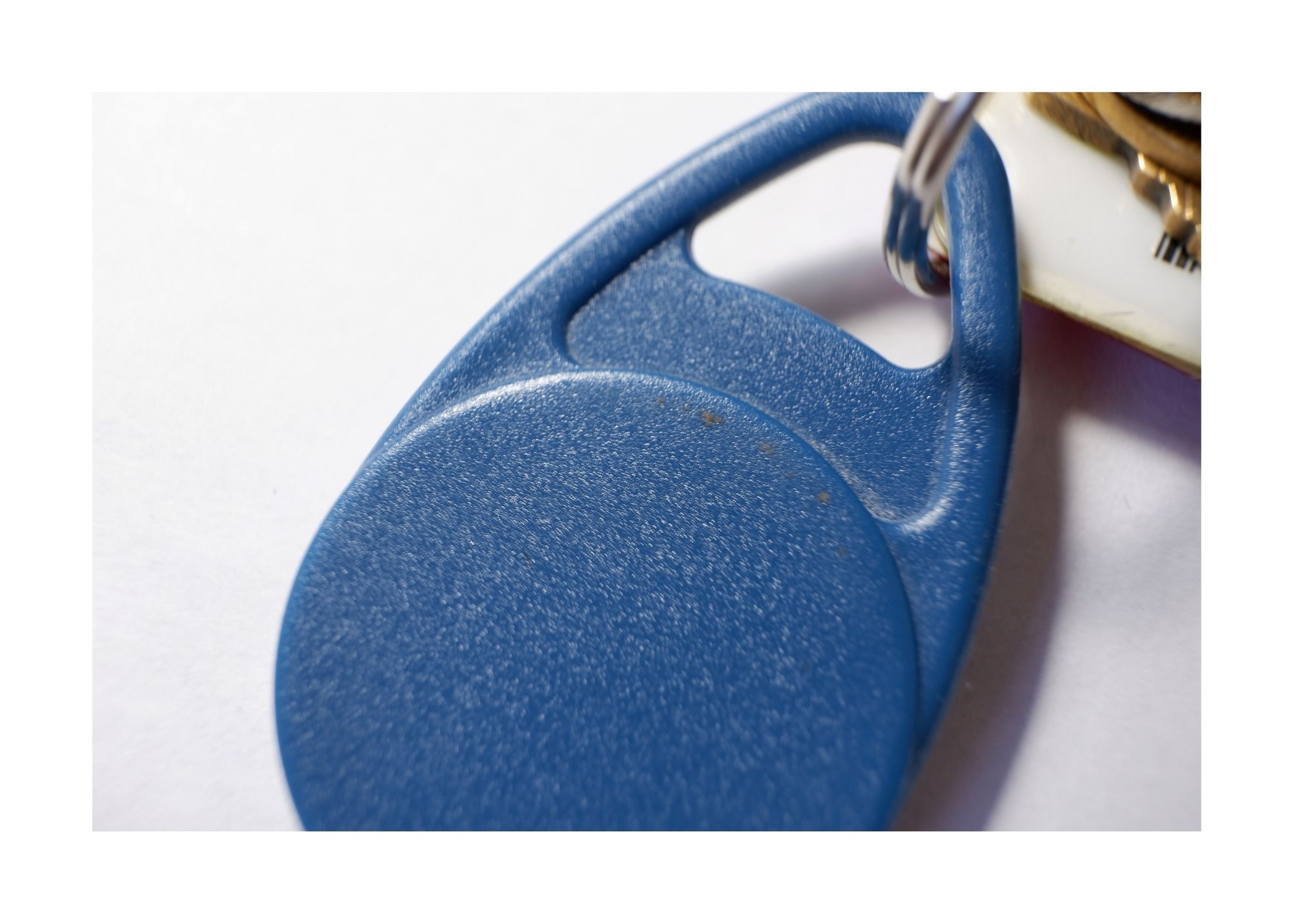
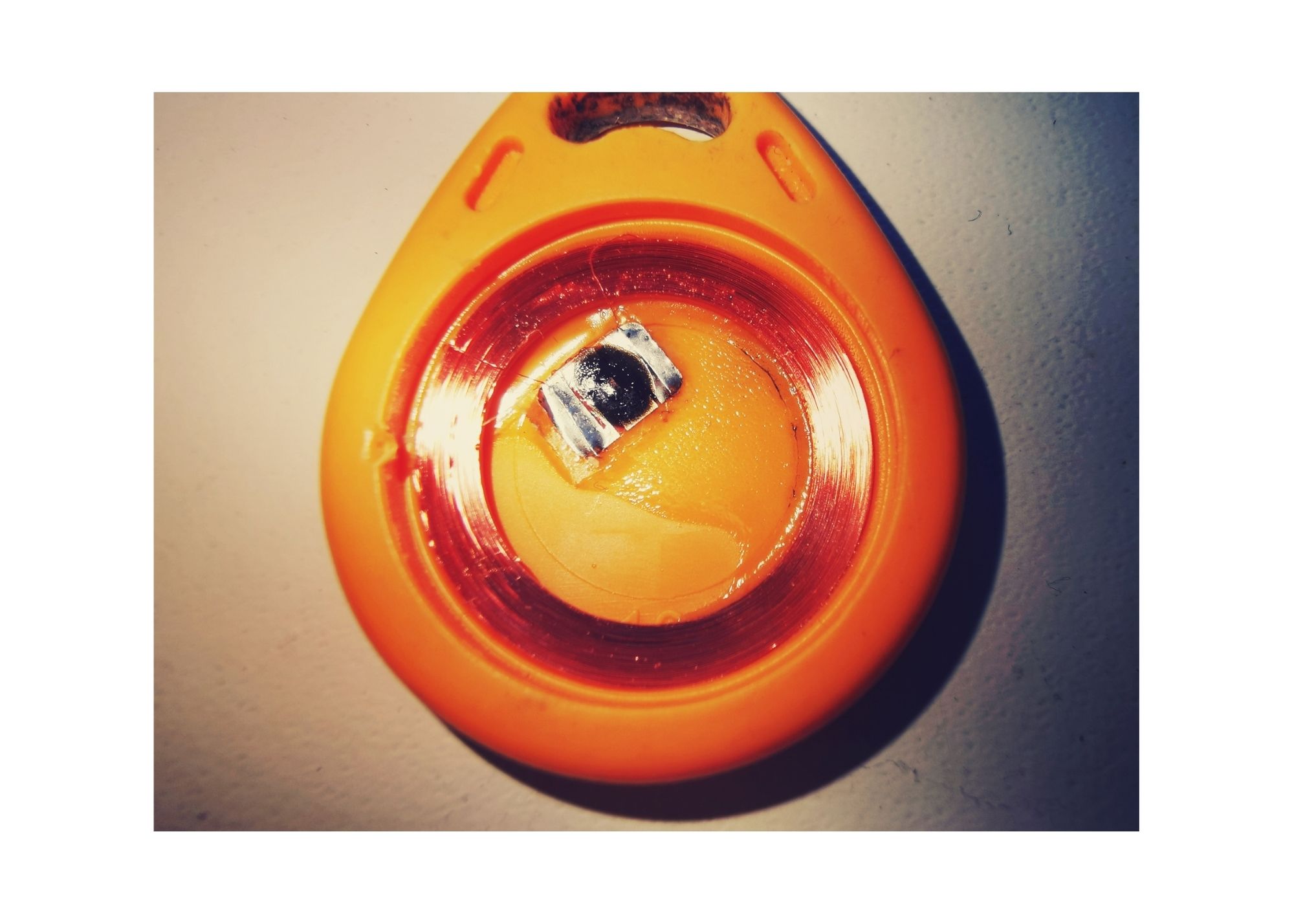

Key Fobs
This type of badge is a security token or a durable small device that authenticates users. They are frequently used to authenticate access in places where there is constant human traffic. They are generally placed in a key ring for convenience. It incorporates 25 kHz or 13.65 MHz RFID reader technology for door and gate access. Key fobs are widely used in offices, buildings, condominiums, gym, fitness centers with 24/7 access to members and different businesses.
Micro Tags
Micro tags are a small sticker that uses HID proximity technology. You can simply convert a photo ID or security badge to a proximity card by adding a micro tag sticker to the badge. It easily attaches and then can be presented to the reader to gain access to a door or area.
Mobile Credentials
Users can also unlock doors using mobile credentials instead of a key card. It’s the newest solution for door access control systems and works similar to a key fob or micro tag. The unique user access ID is stored on the phone (typically as a mobile app) instead of on a physical card. It can then be used as an electronic key to open a door with a reader and an electronic lock. The smartphone can connect to the reader using a Bluetooth signal or through a mobile app with programmed unlock features for devices connected to the same wifi. This touchless access control technology reduces the spread of viruses and has become an important access control solution during the 2020 coronavirus pandemic situation.
Upgrading to Card or Touchless Access Control
Upgrading your existing access control system is made easier with open-source access control systems that let you use equipment from a variety of manufacturers. The newest touchless access control systems help to reduce the spread of germs. Touchless access control allows unlock doors using hands-free solutions like waving a hand near the card reader, the mobile app unlocks, mobile Bluetooth unlocks, and much more.
Do you want you to upgrade your system to contactless? Contact us today!
What Are the Disadvantages of a Key Card Door Lock System?
Key card door lock systems offer a modern approach to security, blending convenience with technological advantages. However, there are several downsides to consider before implementation.
Security Drawbacks
While key card systems enhance access control, they also present certain vulnerabilities:
- Fragility: Key cards are susceptible to damage, such as scratches or bends, which can render them inoperative and necessitate replacements.
- Loss and Theft: Due to their small size, key cards can easily be lost or misplaced. When in the wrong hands, a lost key card can pose a significant security risk.
- Reproduction Risks: Some access cards can be cloned with basic, readily available tools, compromising the security they are meant to provide.
Inefficiencies in Operation
Using key cards can introduce logistical challenges:
- Access Delays: Situations such as misplacing a card or system malfunctions can cause entry delays, resulting in bottlenecks during peak usage times.
- Complex Administration: Managing the issuance and revocation of cards can be cumbersome, consuming valuable time and resources. A robust system requires streamlined procedures to ensure smooth operations.
- Distribution Hassles: Cards need to be physically handed or mailed to users, adding layers to onboarding and administrative tasks.
Scaling Difficulties
Expanding businesses face unique challenges with key card systems:
- Decentralized Management: Older systems often lack centralized control, making it difficult to manage access across multiple sites efficiently.
- Prolonged Onboarding: Delays in creating and distributing cards can lengthen onboarding, potentially impacting productivity.
- Frequent Re-issuance: System updates may necessitate reissuing cards to all users, leading to additional costs and complexity.
- Multiple Cards for Multi-site Access: Employees requiring access to various locations might need to carry several cards, increasing the potential for confusion and mismanagement.
In conclusion, while key card door lock systems offer a sophisticated form of security, they come with notable drawbacks that need careful consideration and management.
“What should businesses consider when investing in a key card access and entry system for buildings?
- Security: Ensuring the system provides adequate protection.
- Efficiency: How well the system optimizes access control.
- Scalability: The ability to expand the system as business needs grow.
- User Experience: Ensuring ease of use for all users.
- Integration: How well the system works with existing technologies.
- Support: Availability of technical assistance.
- Cost: Balancing budget constraints with system capabilities.
What Factors Influence the Cost of Installing a Key Card Access System?
Investing in a key card access system can be seen as a cost-effective security solution—but it’s essential to understand the array of factors that can impact your budget. Here’s a detailed breakdown:
Building Size and Configuration
The size and configuration of your building will play a pivotal role in determining the cost of the key card system. Larger buildings or those with complex layouts like multiple floors, mixed-use zones, or various entry points for vehicles and pedestrians often necessitate more equipment. This could include additional key card readers and wiring, all of which contribute to higher installation costs compared to a straightforward, single-entry building.
Type of Card Reader
Different card readers come with different capabilities and price tags. Some readers may offer advanced features, such as compatibility with multiple credential types or integration with video surveillance. The selection of readers should align with the desired security level, as these added functionalities can significantly raise costs.
Quantity of Key Cards
The number of key cards needed is another important cost factor. This includes not just the physical cards for all employees and third parties requiring access, but also administrative costs for their distribution and ongoing management. More users generally mean higher expenses.
Software Capabilities
The software component of a key card system is crucial and can be a significant cost driver. Newer systems often demand up-to-date or advanced software, especially if remote or cloud-based management is required. While such software increases operational flexibility—allowing for remote user sync, permission adjustments, and schedule changes—it can also escalate costs, especially if system upgrades are necessary to support these capabilities.
Enhanced Security Features
For organizations needing heightened security, additional features like integrated video surveillance or motion detection sensors may be essential. Although these can substantially raise the installation costs, they provide vital layers of security. Advanced systems might even utilize technology like license plate recognition for gate access, further increasing expenses.
Professional Installation
The complexity of the system and the expertise required for installation also affects the cost. Professional installation is recommended, particularly for extensive systems, to ensure optimal performance and durability. Such expertise, however, does come at a price, adding to the overall budget.
Maintenance Costs
Ongoing maintenance is crucial to ensure the system remains operational and secure. Maintenance expenses will vary based on the system’s complexity, the features included, and any necessary hardware or software updates. Factoring these costs into your budget is essential to avoid unexpected expenses down the line.
By understanding these factors, you can better anticipate the costs associated with installing a key card access system, enabling you to plan effectively and make informed decisions tailored to your specific security needs.
What Are the Disadvantages of a Key Card Door Lock System?
Key card door lock systems offer a modern approach to security, blending convenience with technological advantages. However, there are several downsides to consider before implementation.
Security Drawbacks
While key card systems enhance access control, they also present certain vulnerabilities:
- Fragility: Key cards are susceptible to damage, such as scratches or bends, which can render them inoperative and necessitate replacements.
- Loss and Theft: Due to their small size, key cards can easily be lost or misplaced. When in the wrong hands, a lost key card can pose a significant security risk.
- Reproduction Risks: Some access cards can be cloned with basic, readily available tools, compromising the security they are meant to provide.
Inefficiencies in Operation
Using key cards can introduce logistical challenges:
- Access Delays: Situations such as misplacing a card or system malfunctions can cause entry delays, resulting in bottlenecks during peak usage times.
- Complex Administration: Managing the issuance and revocation of cards can be cumbersome, consuming valuable time and resources. A robust system requires streamlined procedures to ensure smooth operations.
- Distribution Hassles: Cards need to be physically handed or mailed to users, adding layers to onboarding and administrative tasks.
Scaling Difficulties
Expanding businesses face unique challenges with key card systems:
- Decentralized Management: Older systems often lack centralized control, making it difficult to manage access across multiple sites efficiently.
- Prolonged Onboarding: Delays in creating and distributing cards can lengthen onboarding, potentially impacting productivity.
- Frequent Re-issuance: System updates may necessitate reissuing cards to all users, leading to additional costs and complexity.
- Multiple Cards for Multi-site Access: Employees requiring access to various locations might need to carry several cards, increasing the potential for confusion and mismanagement.
In conclusion, while key card door lock systems offer a sophisticated form of security, they come with notable drawbacks that need careful consideration and management.
What Inefficiencies Can a Security Card Lock System Present?
Access Delays: One common inefficiency of security card lock systems is the potential for access delays. If an individual misplaces their card or if there’s a technical glitch, it can result in a bottleneck at entry points. Swipe-based systems are particularly prone to needing several attempts to work, causing frustration and slowdowns.
Administrative Burdens: Managing the cards can become cumbersome. Assigning new cards and deactivating old ones consumes valuable time and resources. The optimal security system should offer instant management capabilities to minimize disruptions and keep operations running smoothly during personnel transitions.
Logistical Challenges of Card Distribution: Distributing security cards involves added steps, particularly in the onboarding process. Cards often need to be handed out in person or sent through mail, which can delay access for new employees.
Potential for Unreliable Technology: Even more advanced proximity card systems can be unreliable if not properly configured. Issues with read range can lead to inconsistent access, undermining the system’s efficiency.
In summary, while security card systems are a step up from traditional locks, they come with their own set of inefficiencies related to access, administration, distribution, and technological reliability.
Benefits of key card access systems
Below are the advantages of the card access system that keeps the facility secure:
Record Keeping
Businesses keep track of the employee’s entry/exit time.
What information is been stored in the system?
- Date and time of credential read
- Unique ID number or badge number
- Name of credential holder
- Name of door or reader being accessed
- Access granted/denied condition
Many businesses desire this kind of audit trail, especially banks and IT industries.
Multiple locations
Several properties can be monitored from one location or server.
A keycard access allows a company to monitor all office locations located around the world from a centralized main office. Regardless of the technology – swipe, RFID, or Bluetooth – one governing system will control the entire facility. Cities can keep track of several buildings throughout a large area.
Restrict access
This is a huge benefit to the businesses with a simplified process of granting and revoking access to employees.
Grant Access
Granting access works in the similar way like restricting access.
Improve productivity
Keycard makes the process productive because the employees are responsible for their locations in the facility.
No Unauthorized Written Records
The system set the keycode in the card which cannot be physically stolen unless the employee writes the code somewhere.
Implement a lockdown procedure
Its beneficial during emergency situation.
Logging Access Activity
Audit trail obtained by recorded log activity for every individual since every card is unique.
Easier to Change
A keycard is a physical object and it can be stolen.
Difficult to duplicate
In the past, with lock and key system, the physical keys could be copied very easily.
Reduce Windshield and Repair Time
If a tech needs different access to handle an emergency in the field, his or her rights can be updated.
Flexible – can be used for External or Internal Access Control
External control is used by businesses or organizations who want to control access to their facilities.
Key cards are used for internal doors to control access to highly sensitive areas such as hospital supply rooms, guard shacks, or IT areas where private information is stored. Schools use them for classrooms to prevent theft and restrict access to certain areas of the school such as the computer labs. Hotels or apartment buildings also use internal card entry systems in elevators to restrict access to adjust the floor guests or tenants and are very common for jails and courthouses to restrict access to certain levels. Keycard access is also used in the public areas of the building such as the lobby or the restaurant floors.
Individually programmed
Entry key cards are programmed for each individual, allowing businesses to customize access for each person.
Pair with Video Surveillance system
Pairing with video system allow visual supervision of individuals entering and exiting the facility.
What are the Security Risks of a Card Access Control Solution?
Card access control systems offer a convenient security option, yet they come with several vulnerabilities that should not be overlooked. Understanding these risks is crucial for any business considering or currently using such systems.
-
Susceptibility to Damage: Access cards can easily suffer physical wear and tear. Damage to these cards can disrupt entry to facilities, necessitating replacements, which might delay operations.
-
Potential for Loss or Misplacement: These cards are compact, making them easy to lose or misplace. The process of issuing replacements can be both costly and time-consuming. Moreover, a lost card falling into the wrong hands poses a significant security threat.
-
Inconsistent Replacement Times: The time required to replace a lost or damaged card can vary widely. This inconsistency can lead to inconvenient delays, potentially hindering access for employees or visitors.
-
Ease of Duplication: Many key card systems, particularly those used with swipe entry, are vulnerable to duplication. Copying these cards using inexpensive, readily available tools is easier than one might expect, raising concerns over unauthorized access.
In summary, while card access control solutions offer convenience and a level of security, it is vital to weigh these benefits against the inherent risks they present.
How Key Card Entry Solutions Integrate with Existing Security Systems
Key card entry systems can be seamlessly integrated with a variety of existing security technologies, enhancing both safety and operational efficiency. Here’s how they can be combined with different systems for optimal security:
Enhance Communication with Intercom Systems
Integrating a key card system with intercom technology allows your team to communicate with visitors before granting access. Some advanced solutions combine intercom functionality and card reading in one device, streamlining installation and usage.
Boost Surveillance with Video Technology
Pairing your key card system with video surveillance offers a dynamic security duo. By installing video cameras equipped with motion sensors near access points, you can monitor real-time activity and verify entries, providing an added layer of security.
Improve Response with Alarm Systems
By coupling key card access with alarm systems, businesses can effectively deter unauthorized attempts. If an unapproved individual tries to enter a secured space, the triggered alarm notifies security personnel, ensuring swift action against potential breaches.
Streamline Visitor Management
Seamlessly integrate your access card system with visitor management tools. This integration can automatically generate visitor permissions, making it easier to issue custom access cards when guests check-in for meetings or events at your facilities.
Increase Security with Biometrics
Augment your security with biometric systems, such as fingerprint or facial recognition technologies. By using these methods alongside key card systems, you implement a powerful multi-factor authentication process that enhances security measures.
Facilitate Emergency Protocols with Lockdown Solutions
Integrating lockdown solutions with key card systems empowers staff and first responders to secure premises quickly during emergencies. This allows for immediate lockdowns or controlled access, aiding in rapid evacuations and minimizing potential risks or losses.
By blending these technologies, businesses can effectively tailor their security strategies to meet specific needs and create a robust, comprehensive security environment.
What Challenges Exist in Scaling Card Key Door Lock Solutions?
As businesses grow, expanding a card key door lock system can present multiple challenges that affect efficiency and security. Here’s a closer look at these issues:
-
Decentralized Management: Older card key systems often lack centralized control features. This can complicate management, especially for businesses operating across various locations. Effective management becomes cumbersome when administrators cannot oversee all access points from a single platform.
-
Lengthy Onboarding: The process of issuing new key cards can be time-consuming. Delays in providing access to new employees not only slow down onboarding but can also impact productivity and result in revenue losses.
-
Frequent Card Replacements: Any updates or changes in the access system might demand the re-issuance of all employee key cards. This not only disrupts workflow but also incurs additional costs and administrative effort.
-
Multiple Cards for Multiple Locations: Employees requiring access to several sites might need to carry multiple key cards. This not only increases the risk of loss but also adds to the inconvenience for the employees and the administrative load on the company.
Addressing these challenges involves considering more advanced solutions that offer centralized management and streamlined processes.
What are the Security Risks of a Card Access Control Solution?
Card access control systems offer a convenient security option, yet they come with several vulnerabilities that should not be overlooked. Understanding these risks is crucial for any business considering or currently using such systems.
-
Susceptibility to Damage: Access cards can easily suffer physical wear and tear. Damage to these cards can disrupt entry to facilities, necessitating replacements, which might delay operations.
-
Potential for Loss or Misplacement: These cards are compact, making them easy to lose or misplace. The process of issuing replacements can be both costly and time-consuming. Moreover, a lost card falling into the wrong hands poses a significant security threat.
-
Inconsistent Replacement Times: The time required to replace a lost or damaged card can vary widely. This inconsistency can lead to inconvenient delays, potentially hindering access for employees or visitors.
-
Ease of Duplication: Many key card systems, particularly those used with swipe entry, are vulnerable to duplication. Copying these cards using inexpensive, readily available tools is easier than one might expect, raising concerns over unauthorized access.
In summary, while card access control solutions offer convenience and a level of security, it is vital to weigh these benefits against the inherent risks they present.
What Challenges Exist in Scaling Card Key Door Lock Solutions?
As businesses grow, expanding a card key door lock system can present multiple challenges that affect efficiency and security. Here’s a closer look at these issues:
-
Decentralized Management: Older card key systems often lack centralized control features. This can complicate management, especially for businesses operating across various locations. Effective management becomes cumbersome when administrators cannot oversee all access points from a single platform.
-
Lengthy Onboarding: The process of issuing new key cards can be time-consuming. Delays in providing access to new employees not only slow down onboarding but can also impact productivity and result in revenue losses.
-
Frequent Card Replacements: Any updates or changes in the access system might demand the re-issuance of all employee key cards. This not only disrupts workflow but also incurs additional costs and administrative effort.
-
Multiple Cards for Multiple Locations: Employees requiring access to several sites might need to carry multiple key cards. This not only increases the risk of loss but also adds to the inconvenience for the employees and the administrative load on the company.
Addressing these challenges involves considering more advanced solutions that offer centralized management and streamlined processes.
Tips to Improve Business Security
There is no doubt saying, “Installing a card access system is one of the best ways to keep your business secure.” But there are other options also that you might want to consider. Here at Umbrella Security Systems, we have the ability to take your security in hand and ensure the safety and efficiency of your facilities. Here are some steps you can implement today:
Umbrella Security Systems is an Independent Physical Security Consultant who specializes in commercial electronic access control systems. Get a free consultation from us to set you on the right track and get the most cost-effective and best key card access system for your business.
